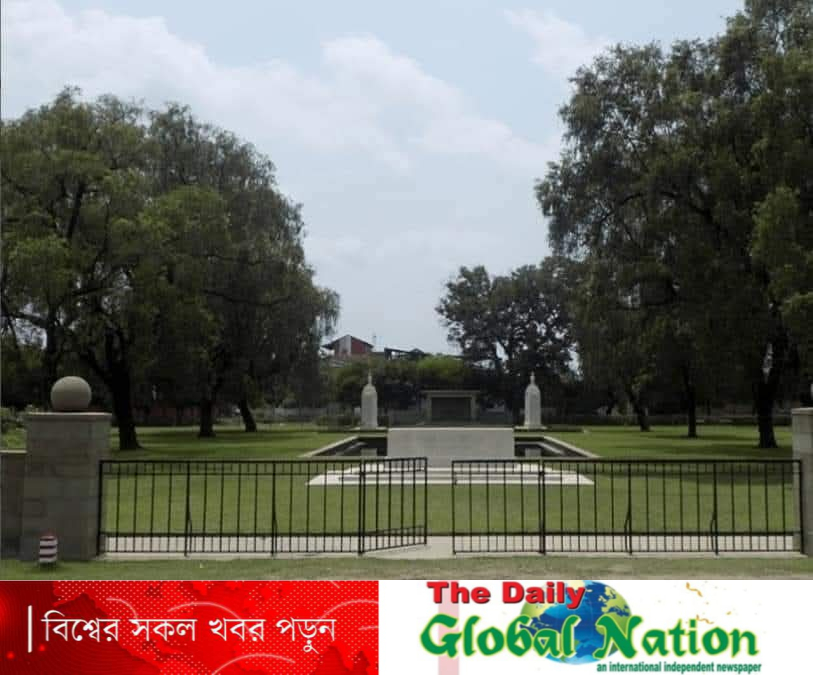
On the 81st Anniversary of the outbreak of the war in Kohima in the North-Eastern State of India during the Second World War,
 A heartiest tribute was paid to the Immortal Martyrs, Heroes and Brave Soldiers who protected the Country. Today, on 4th April 2025, in the Auditorium of Satyagraha Research Foundation, Satyagraha Bhawan,
A heartiest tribute was paid to the Immortal Martyrs, Heroes and Brave Soldiers who protected the Country. Today, on 4th April 2025, in the Auditorium of Satyagraha Research Foundation, Satyagraha Bhawan,
tribute was paid to the Immortal Martyrs, Heroes and brave Soldiers who were Martyred in the Second World War on the 81st Anniversary of the start of the war in Imphal, the northeastern state of India during the Second World War.
Representatives of various social organizations, intellectuals and students participated on this occasion. On this occasion, International Peace Ambassador Co-Secretary General Satyagraha Research Foundation Dr. Ajaz Ahmad Advocate, Dr. Suresh Kumar Agarwal, Dr. Amit Kumar Lohia, Dr. Shahnawaz Ali, Senior Journalist Co-Founder Mother Tahira Charitable Trust Dr. Amanul Haque, Dr. Mehbob ur Rahman, Director of Mother Tahira Charitable Trust S Saba and Convenor of West Champaran Kala Manch Shaheen Parveen jointly paid tribute to the soldiers who were martyred in Imphal, the northeastern state of India during the Second World War and World War II and said that on this day, 4 April 1944, in Imphal, India The war between the Japanese army and the Indian soldiers had started. In this war, the Indian soldiers, especially women, children and youth, showed immense courage and valour and turned the tables of the Second World War. The contribution of those Indian women, teenagers and youth can never be forgotten. They forced the Japanese army to retreat.
During the Second World War, in 1944, a fierce battle was fought between the British Indian Army and the Japanese Army around Kohima. In this war, the Japanese Army had to retreat. The war was fought in three phases from 4 April 1944 to 22 June 1944. This war has been declared the biggest battle ever involving the British Army.
War Memorial (Cemetery in English) established by the British Empire in memory of the soldiers killed by the Japanese Army in the Battle of Kohima
The surprising thing is that there were Indian soldiers on both sides in the war. During the World War, Netaji Subhash Chandra Bose considered it to be the right opportunity to liberate India and planned to drive out the British with the help of the Japanese government. On one hand, there was Netaji's Azad Hind Fauj and on the other hand, there were Indians in the British Army as well.
During the World War, on 4 April 1944, Japanese soldiers attacked Kohima, the capital of present-day Nagaland. Here, the command of the British Indian Army was with William Slim. Japan had to face defeat in this war that lasted for three months. About 53 thousand Japanese soldiers were killed in the war. While more than 16 thousand British Army soldiers and a large number of Nagas were killed. Apart from Britain, there were soldiers from India, Australia, Africa as well.
At the end of June, the Allied forces drove out the Japanese from here through a fierce war. After this, the Japanese camped in Imphal. The Japanese army had to face defeat in the Kohima-Imphal war that lasted for about two and a half months in three phases. The British Indian Army defeated the Japanese on every front. This dream could not be fulfilled with the defeat of Japan. Historians believe that Japan's intention was to build a military wall from Kohima to Imphal in the World War. But this defeat stopped it from advancing in South Asia. After this war, Japan was forced to leave Burma.
A war memorial has been built by the British Empire in memory of the soldiers killed by Japan in this decisive war. Which is maintained by the Commonwealth.
During this war, the Japanese had attacked Nagaland fiercely in which a large number of soldiers and officers were killed. All these soldiers killed in the attack were buried on the Garrison Hill. Later 1421 tombs were built in their memory. Local residents come to pay their tribute to those martyred soldiers. These tombs are also shown to the tourists coming to Kohima.
সম্পাদক ও প্রকাশক মোঃ মাহবুবুর রহমান পিএইচডি